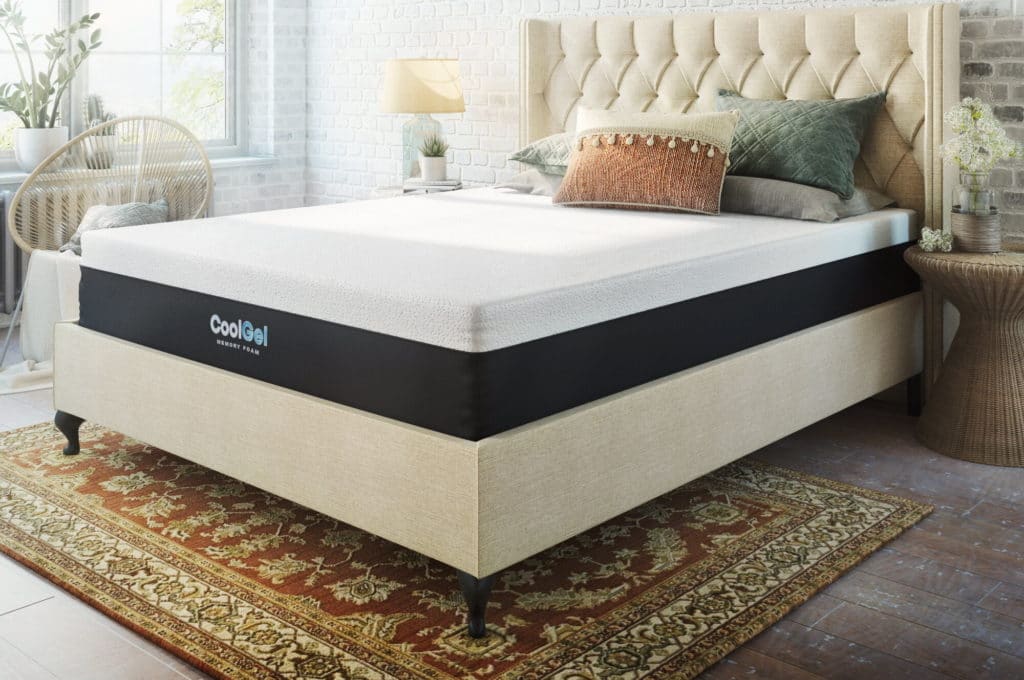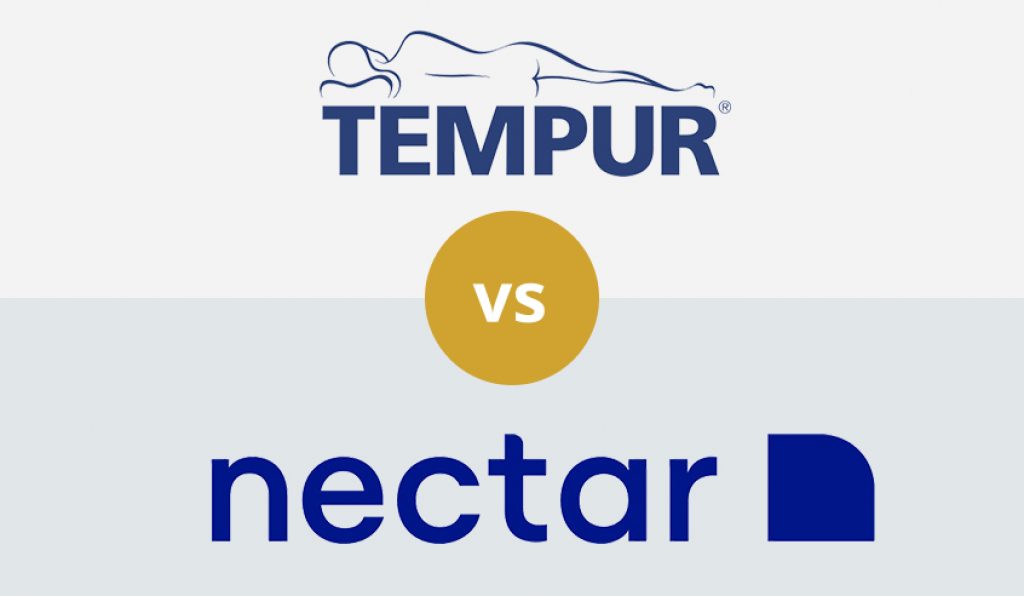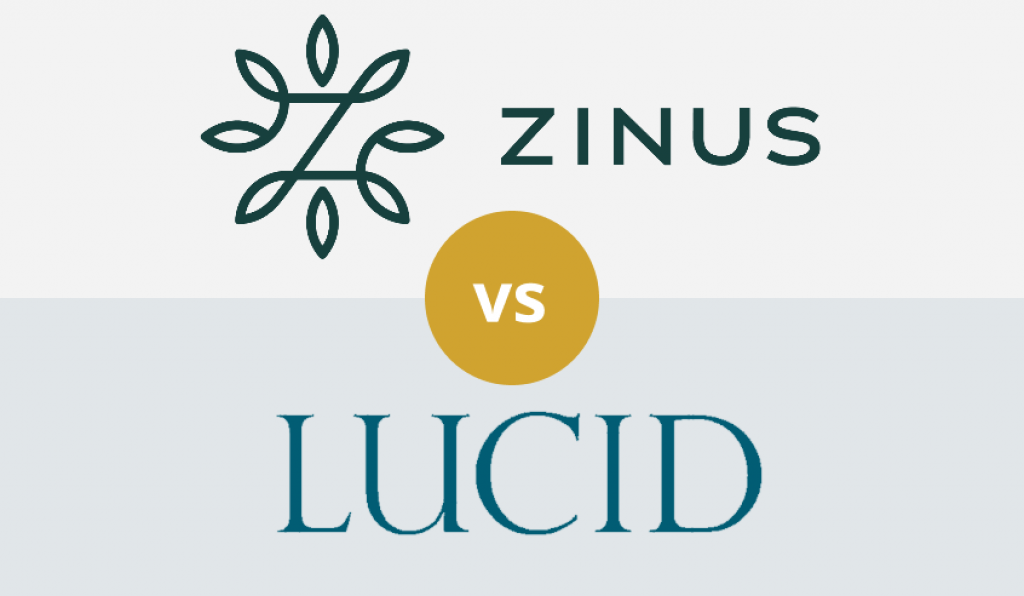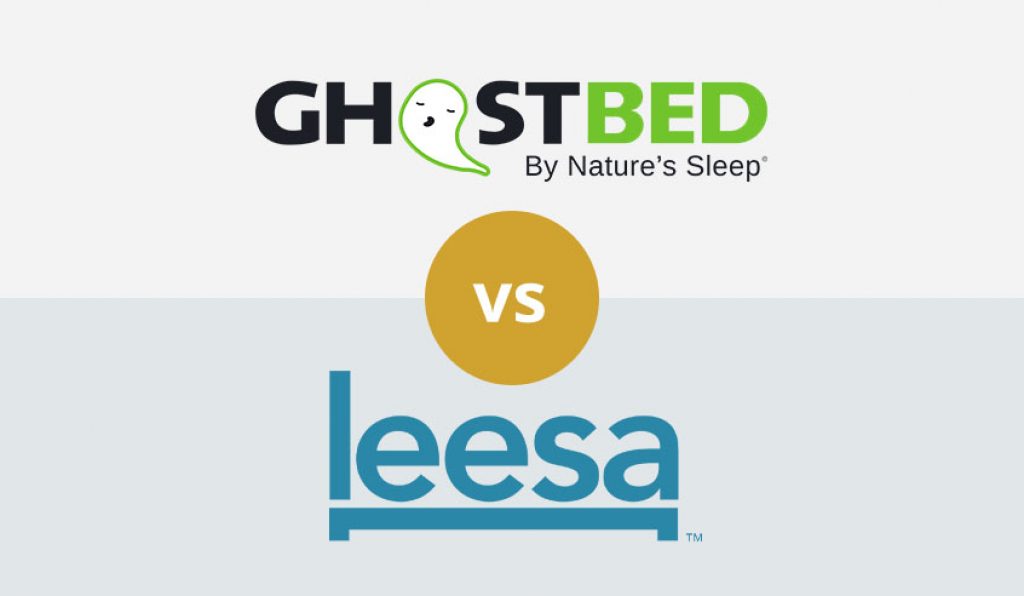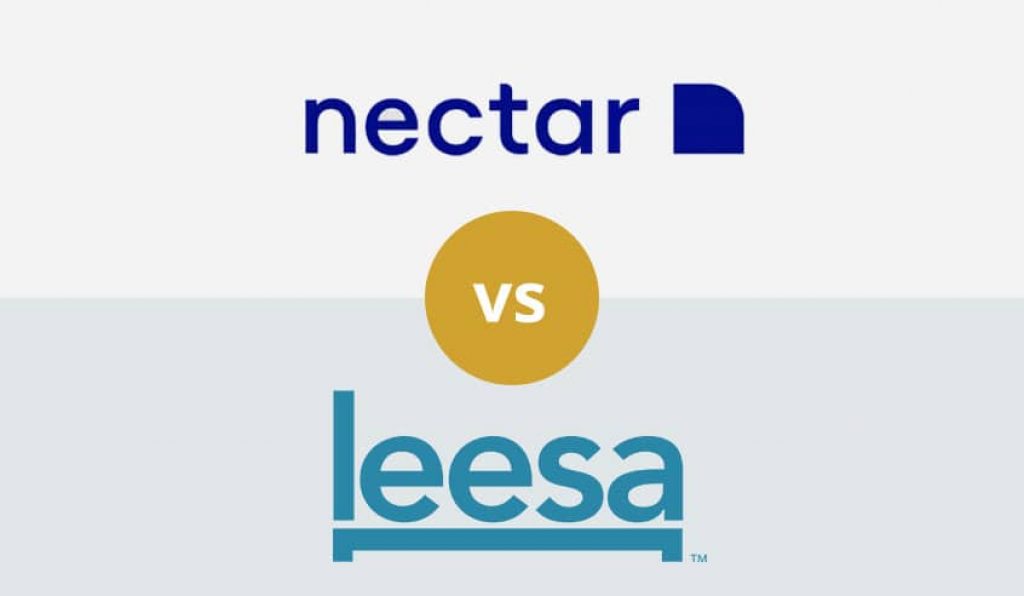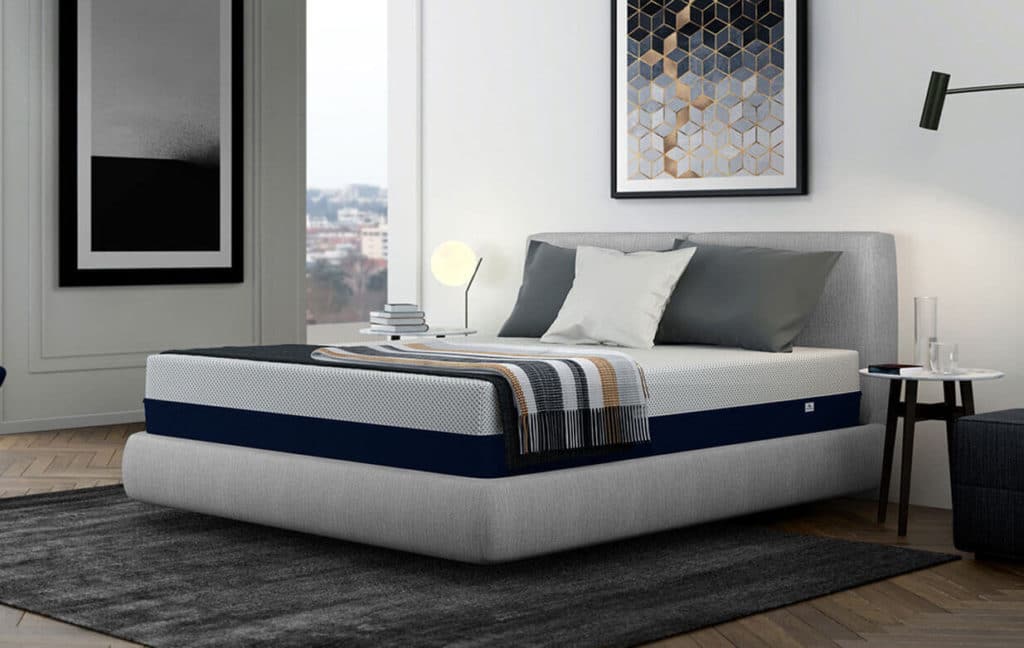

Despite the fact that we spend as much as one-third of our lives on our mattresses, some conventional mattresses are filled with unhealthy chemicals like flame retardants and plasticizers that can affect your ability to get a good night’s sleep. Thankfully, more and more mattress companies are turning to sustainable, eco-friendly materials that lack traditional chemical additives. These organic mattresses offer the promise of better, healthier sleep free from unnatural chemicals as well as peace of mind knowing your mattress was sourced in an environmentally friendly way.
Finding the best organic mattress can be difficult given the number of them now on the market. That’s why we took a closer look at a wide variety of green mattresses. We considered what types of materials these eco-friendly mattresses are made from and whether they are certified for sustainability or lack of synthetic chemicals. We also considered the type of mattress – whether foam, spring, or a hybrid of the two – and what types of sleepers it is comfortable for. Finally, we looked at the sizes different organic mattresses are available in and whether they offer sleep trials so you can find the best green mattress for your sleep.
We spent tens of hours researching organic mattresses, poring over technical specifications and customer reviews. The result is our list of the eight best eco-friendly mattresses in the table below. Continue reading for detailed reviews of each mattress, complete with pros and cons. Our buying guide covers everything you need to know about choosing the best green mattress for your sleep. Finally, we sum up our three overall favorite organic mattresses on the market today.
The hybrid Nest Bedding organic mattress is extremely pricey, even for a high-end organic mattress, but it comes with the knowledge that your mattress is truly free of chemicals and synthetics. In contrast to most other eco-friendly mattresses, which use organic components but aren’t certified organic for the finished product, the finished Nest Bedding mattress is considered to be organic.
The mattress is produced in a clean, purpose-built warehouse where workers aren’t even allowed to wear synthetic perfumes to ensure that the mattresses are fully free from volatile organic compounds.
All of the raw materials – natural latex and organic – are sanitized with ozone to remove any volatiles that may have contaminated them outside of the factory as well. The mattress is certified organic with GOLS and GOTS certifications and the mattress meets all fire retardant standards without the use of synthetic materials.
Taking the top-of-the-line treatment even further, Nest Bedding offers a number of customization options for the mattress. You can get it split down the middle, which is useful if you use the mattress for multiple purposes or need extra motion dampening from your partner. It’s also available in plush, medium, and firm designs, and Nest Bedding offers a 100-night sleep trial so you can ensure you’re choosing the right mattress. If you do want to exchange between two different firmness levels, though, keep in mind that Nest Bedding will charge $100 to cover shipping and return costs.
Compared to most other hybrid organic mattresses, the Nest Bedding mattress is relatively thick at 12 inches. That makes it suitable for heavyset sleepers, as well as significantly more durable than some thinner mattress options. Plus, Nest Bedding offers a lifetime warranty on this mattress – a nice perk given the high sticker price.
More features: ships with one layer of firm latex and two layers of medium
This model is amazing in its adaptability. It provides a range of firmness from soft to hard. With organic cotton knit, organic wool batting and organic latex, there are additional layers of cushion for ultimate comfort. Combined in one mattress is three distinct levels of internal layers. There is one layer of hard latex, while there are two layers of medium latex. By positioning them in different orders to user preference, it changes the feel of the mattress itself.
For the environmentally friendly shopper, this is an ideal product to limit your carbon footprint. This is a perfect option for those looking for an affordable organic mattress. With 100% organic latex, cotton and wool, this mattress is made with high quality and sustainable materials. There are no additional or unneeded materials. Without harmful VOCs, synthetic materials, added rubber, or chemical sprays, this is a completely natural place to sleep at night. Get a good night’s sleep knowing exactly what’s underneath you.
This mattress is designed for comfort. Reliving pressure from the hip and shoulder areas. It supports your entire spine and skeleton. This helps relieve chronic and persistent pain when it’s in the right combination for your sleeping needs. This can be a difficult and prolonged process. It does take time to find the right assortment of a firm and two medium layers. Don’t worry if this bed isn’t quite a fit for you and your lifestyle. There are many options if you’re not satisfied. There is a 365-night risk-free trial period. You have a full year to decide if this is the right mattress for you.
This latex foam mattress by SleepOnLatex is constructed completely from natural latex, with no polyfoam or other synthetic materials to add chemicals to your bed. While the mattress is not certified by GOLS, it does feature a certified organic cotton and wool cover that gives it a soft and comfortable exterior. Plus, the mattress is Greenguard Gold certified, so you can be confident it doesn’t off-gas any unwanted volatile organic compounds.
The latex foam is available in three different densities, which correspond to soft, medium, and firm feeling mattresses. We are focusing here on medium firmness mattress, which is intended for a wide variety of sleepers, while the soft mattress is specifically tailored for side sleepers and the firm mattress for stomach sleepers. In all three firmness levels, the latex foam provides consistent support – unlike synthetic memory foam, it won’t leave you sinking deeper into the bed throughout the night.
The mattress is nine inches thick, but since it’s all latex foam with no innersprings heavyset users found that the mattress provides plenty of support. The latex is also highly durable and won’t develop sags over time – SleepOnLatex even advises customers that there’s no need to rotate this mattress. The warranty only covers the mattress for 10 years, but this includes protection against sags and the dense natural latex should easily last for a decade of sleep.
Pure Green includes a 100-night sleep trial with this mattress, although users warn that it can be hard to return after the trial since it is quite heavy. It’s worth noting that despite the organic nature of this mattress and the long-lasting natural latex construction, Pure Green mattress costs a fraction of what most other eco-friendly mattresses cost. The only downside to this mattress is that some users did find that a faint smell of latex did persists after sleeping on the mattress for several months.
If you are an eco-friendly individual who’s game for going green with nearly everything in life, you might as well give green bedding a try. This Awara mattress is durably built with organic materials not only to save the environment but also to improve the quality of your slumber.
The mattress offers superior comfort and firmness because of its solid construction using eco-friendly materials like an organic cotton cover which is incredibly soft and smooth to the touch.
The mattress owes its durability, bounciness, and heat dissipation capacity to its transition layer, which is made of a 4-inch Dunlop latex. It is a rare kind of organic latex certified by GOLS.
Furthermore, the mattress features 9-inch pocketed coils which make it more bouncy, enhance its durability and most importantly make it firm. The coils are wrapped individually to allow each spring to move freely.
You must be wondering just how bouncy the mattress is, don’t fret, it’s not a trampoline. Its bounciness is more of a push-and-give depending on your actions or movements. However, it does transfer motion too fast compared to other mattresses. So, you will not be very happy when you sleep with a restless partner on it. What’s more, the pocketed coils allow the mattress to reshape itself after movements quickly. So it holds its constitution well.
If you are a combo or stomach sleeper, you will love the extra firmness offered by the mattress’s tall support system. It particularly offers exceptional support to the hips and spine alignment, thus favourable for stomach and back sleepers. Side sleepers who build up more pressure on the hips and shoulders might find a softer mattress than Awara more comfortable.
This latex foam mattress from PlushBeds is one of the only vegan mattress options on the market, using no wool anywhere in the construction. That’s a win for anyone who is looking to buy a mattress that truly protects the environment and its animal inhabitants. Plus, the mattress is certified as Greenguard Gold and does not exhibit any off-gassing when it first arrives at your home.
The mattress is made almost entirely of natural Dunlop latex, with a unique organic foam covering that serves as a required flame retardant. The latex is available in two different densities, corresponding to medium and medium-firm beds – although most users report not being able to tell much of a difference between the two. The latex is soft yet supportive and is extremely helpful for back sleepers who have experienced pressure points with other mattresses.
The mattress is only six inches thick, which makes it a better choice for light- and medium-weight sleepers than for heavyset sleepers. However, the Dunlop latex is highly resistant to sagging and the relatively thin construction of this mattress makes it much easier to move around the house. The mattress also comes with a 100-night sleep trial, and the six-inch thickness makes it significantly easier to return in case you’re not happy with it. PlushBeds also offers a 25-year warranty in case of premature sagging of the latex.
Keep in mind that this mattress is thinner, yet more expensive than the nine-inch Pure Green latex mattress. While there are some differences in the natural latex and firmness, a lot of the premium on this mattress goes towards enabling the vegan construction.
This innerspring mattress from Naturepedic uses a unique design with two layers of coil to provide comfort and support together. The upper 1.5 inches of the mattress are filled with metal microcoils, which are small enough to avoid forming pressure points in the mattress. Below that, the remainder of the mattress is filled with larger encased coils – the type of coils typical to innerspring mattresses – to provide plenty of support.
Together, these coil layers and the pillowtop above give the mattress a firm feel and enough support for medium-weight sleepers. Heavyweight sleepers may want to avoid this mattress, as some users reported sinking through to the encased coil layer. The rest of the mattress, including the pillowtop, is constructed from organic cotton and wool that are certified by GOTS.
The pillowtop and wool together provide plenty of ventilation in this mattress. The wool is designed to wick away sweat during the night, so you never have to worry about overheating. Plus, since the mattress doesn’t contain any dense latex or cotton support layers, it is much lighter than most other organic mattresses we reviewed. Keep in mind, though, that the innersprings are very effective at transferring motion across the bed, which can be problematic if you have a partner who rolls around in the night.
Unfortunately, Naturepedic doesn’t offer a sleep trial on this mattress – and is one of the few manufacturers left that doesn’t make sleep trials standard. Given the somewhat high price tag of this mattress, that can make it something of a risk. However, if you’ve slept well on firm innerspring mattresses in the past, chances are that the Naturepedic bed will work for you.
The other downside to this mattress is that innersprings have a relatively short lifespan. Naturepedic provides just a 10-year warranty on this mattress, and you’ll need to remember to rotate it frequently if you want it to last to that time.
This eco-friendly hybrid mattress from Sunrising Bedding is surprisingly budget-friendly, making it a great organic mattress choice for a futon or guest room as well as your bedroom. However, the downside for true green mattress fans is that this bed does include polyfoam – something you won’t find in more expensive organic mattresses.
The mattress is constructed from five different layers, starting with a thick layer of independently pocketed metal coils that are independent from one another to minimize the motion that is typical to hybrid and innerspring mattresses. On top of that, there are two foam layers – one of gel memory foam and the other of air foam. While these foams do contain polyfoam and are not fully organic, they are processed so as to dramatically reduce their chemical composition compared to traditional foam mattresses. Finally, a natural Talalay latex layer gives support and bounce, while a cashmere wool top covers the entire bed and provides flame resistance.
The combination of the springs, foam, and latex make this a relatively firm bed – users found that it was best for stomach sleepers and back sleepers who prefer a firm feel. While medium-weight users were comfortable on the bed, heavyset sleepers may want to avoid this mattress since it is only eight inches thick and there is relatively little support above the innersprings.
The mattress is somewhat heavy to move around, but most users didn’t have a problem rotating the bed with two people. Sunrising Bedding offers a 120-night sleep trial as well as a long 20-year warranty to ensure the innersprings outlast the rest of the mattress components.
This hybrid organic mattress from Happsy is relatively inexpensive, which is a plus for first-time organic mattress buyers, although it received mixed ratings from users. The mattress is constructed with three zones of pocked coil springs beneath supporting layers made of a cotton and wool blend. The cotton and wool are certified organic, and the finished mattress is certified to be free from volatile organic compounds. It is made in the U.S. by skilled artisians.
The hybrid innerspring construction provides a medium firm support, which is good for a wide variety of back and stomach sleepers. However, heavyset users noted that the support layers can sag and collapse onto the innersprings within one to two years of use, rendering the bed relatively uncomfortable. Lightweight users and children did not experience this problem, although it doesn’t bode well for the long-term durability of the mattress. Happsy offers a 20-year warranty, although it remains to be seen how the company will respond to warranty claims related to sags after several years of sleeping on the bed.
In addition, some users reported issues with the smell of this mattress. Although the cotton and wool are washed with organic soap and hydrogen peroxide, reports of the mattress developing a “barnyard” smell were common – still, this smell disappeared after several uses. Thankfully, Happsy offers a 100-night sleep trial, so you should be able to determine if the smell will be a problem before committing to the mattress.
This lavishly thick natural latex mattress from Dreamfoam Bedding is the perfect choice for sleepers who love the supportive feel of latex foam. The mattress uses a unique two-layer design that allows you to easily change out the firmness of your mattress. The top three inches of the bed is enclosed in a Eurotop zipper enclosure so that you can change out the latex inside for any of three density options corresponding to soft, medium, and firm comfort.
Underneath the zipper top, the Element mattress uses a six-inch layer of high-density Talalay latex that is designed to remain in place for the life of the bed to provide excellent support. This mattress is thick enough to be plenty comfortable for heavyset sleepers, who don’t report any issues with pressure points and actually prefer the supportive foam feeling of this bed compared to many hybrid mattresses. The mattress is finished with organic cotton and is certified by OEKO-TEX.
Users also rave about the customer support they have received from Dreamfoam Bedding. Users who chose the wrong firmness initially were able to swap it out with just a quick call to the company, and even customers who have had the mattress for years were able to cheaply get a replacement top latex layer – with a rebate for returning and recycling the old latex layer. That also speaks to the durability of this mattress, since by replacing the top layer it’s possible to extend the life of the mattress well beyond the 10-year warranty.
On top of all that, the mattress is surprisingly inexpensive for a fully organic and eco-friendly bed. The only real downside is that given the nearly 10 inches of latex, the mattress is quite heavy – so much so that you’ll need to use a box spring rather than wooden slats to support this bed.
Now that you’ve learned more about our eight favorite organic mattresses on the market today, how do you choose between them to get the mattress that will give you the best night’s sleep? In our buying guide, we’ll cover everything you need to know about eco-friendly mattresses, including what sets them apart from conventional mattresses and why one might be better for you than your current mattress. We’ll also look more closely at the materials that go into these green mattresses and the features you need to consider when deciding on a bed.
An eco-friendly mattress is one that is made primarily from natural materials, ideally organic materials that are sustainably sourced. Most important, organic mattresses lack the chemical flame retardants and plasticizers that are abundant on conventional mattresses. Instead, green mattresses pass flame retardant standards by using fire socks made from untreated Kevlar, silica, wool, or thistle.
However, there is no standard definition for what constitutes an eco-friendly mattress – which makes the eco-friendly and organic terminology a tricky business. Most truly organic mattresses aren’t 100% organic, since some mattress components can’t be derived from natural materials at a reasonable cost. Instead, most organic mattresses today are between 60% and 95% constructed from organic or natural materials. In addition, some green mattresses are more eco-friendly than others in that they use primarily organic materials or materials that can be harvested sustainably from the environment.
It’s also important to be on the lookout for conventional mattresses masquerading as eco-friendly alternatives. Many conventional mattress manufacturers will describe their products as natural or eco-friendly, when in fact this refers to only one small layer or component of the whole mattress.
There are a number of potential advantages to switching to a green mattress. First, organic mattresses lack chemicals like flame retardants, plasticizers, and dyes that are common in conventional mattresses. While there are few long-term studies on the health effects of these chemicals, common sense tells us that breathing in chemicals as you sleep likely isn’t good for your body.
Organic mattresses are also more environmentally friendly than conventional mattresses. Since they use natural materials rather than industrially processed ones, they have less of a manufacturing footprint in terms of greenhouse gas emissions and chemical waste products. That can provide peace of mind to consumers who are conscious of how their everyday lives impact the environment.
Finally, organic mattresses tend to have longer lifespans than their synthetic competitors. Natural materials are more durable and won’t break down or sag quite as quickly. Latex, in particular, is renowned for its longevity compared to synthetic replacements and offers an additional two to five years of mattress life.
That said, there are a few drawbacks to opting for a green mattress. Eco-friendly mattresses typically come with a higher price tag than conventional alternatives since the materials are more expensive to source. Green certifications can push the price even higher, so much so that you should expect to pay at least $1,000 for a green mattress with GOTS or GOLS certifications.
In addition, shoppers looking for organic mattresses will have fewer options – in terms of sizes, thicknesses, materials, and firmness – than shoppers willing to opt for a conventional mattress. This may not be a huge problem if you’re not a picky sleeper, but people who have a history of sleeping trouble may not be able to find the perfect mattress that they need.
Lastly, green mattresses have a relatively limited history – most green mattresses and manufacturers have only been around a few years. This is not a huge problem, but the longevity of most organic mattresses has not been fully tested and there is a shorter history of customer service at any company you purchase an eco-friendly mattress from.
When it comes to choosing an organic mattress, there are a number of features to watch out for that affect everything from durability to comfort. Here, we’ll take a closer look at these important features and explain how they can affect your sleep and your choice of organic mattress.
Organic mattresses fall into the same three major construction categories as conventional mattresses: foam, spring, and hybrid.
Organic foam mattresses like the models from Dreamfoam Bedding, PlushBeds, and Pure Green are typically made from natural latex rather than the synthetic foams found in most conventional foam mattresses. Latex provides exceptional durability and more springiness than standard chemical-based foams, although it will not be safe for anyone with a latex allergy. Some eco-friendly foam mattresses also use plant-based memory foam, which uses plant-derived oils rather than petrochemicals for processing. Latex foam mattresses span a wide range of firmness levels, thus making them suitable for a wide variety of sleepers.
Innerspring mattresses like the model from Naturepedic are somewhat more difficult to make fully green since the internal coils have to be made with an industrial process. However, these mattresses can use natural materials like cotton and wool to create the comfort layers and mattress casing.
Innerspring mattresses tend to be firm, with excellent edge support but poor motion dampening across the mattress. In addition, heavyset sleepers may want to avoid innerspring mattresses because the coils can be quite painful if you sink through the comfort and support layers.
Hybrid mattresses, which use both innersprings and foam, are popular organic mattresses. Many of these, like the Awara Hybrid Organic Mattress, Nest Bedding, and Sunrising Bedding mattresses, use a combination of cotton and wool with latex-based foam to create the hybrid construction. These mattresses are well-liked because they combine the soft feel of foam with the bouncy support of innersprings. They also provide a middle ground when it comes to motion transfer and edge support.
The materials most commonly used in organic mattresses are natural latex, cotton, and wool. Latex is used to create eco-friendly foams that mimic synthetic foams but offer increased bounce and longevity. Meanwhile, cotton and wool are often used in combination in hybrid and innerspring mattresses to build the support and comfort layers. Where these materials are sourced from and whether they are organic or sustainable can vary from mattress to mattress.
Keep in mind that while eco-friendly mattress manufacturers focus on the green materials they use, these mattresses do use some industrially processed materials. Innerspring and hybrid mattresses, in particular, use metal coils that currently require industrial manufacturing. Look for organic certifications to ensure that these compounds are not releasing volatile organic compounds or contain excess chemicals.
Certifications can be extremely important in determining whether a mattress is truly natural and free of chemicals. When it comes to green mattresses, there are four major certifications:
The firmness of organic mattresses can vary widely, and not every manufacturer describes firmness in the same way. For example, the medium-firm rating of the PlushBeds mattress may not correspond at all to the medium-firm rating of the Happsy Organic Mattress. To make matters even more complicated, many sleepers feel differently about whether any given mattress is firm or soft.
That said, you can gauge what type of firmness you need based on your sleeping style. Stomach sleepers tend to prefer firm mattresses like those from Sunrising Bedding and Naturepedic, while side sleepers tend to prefer soft and plush mattresses like those from Nest Bedding and Pure Green. Back sleepers often express the widest range of comfort on mattresses of different firmness, so you may need to try out a few different mattresses to see what you are most comfortable on.
When it comes to finding a mattress of the perfect thickness, options are somewhat more limited for organic mattresses than conventional mattresses. The majority of organic mattresses are 10 inches thick or less, although the Awara Hybrid Organic Mattress breaks this rule with an enormous 13-inch thick design. Thickness will be especially important for heavyset sleepers, who need additional support.
Thankfully, most organic mattresses are available in a range of sizes. All of the mattresses we reviewed are available in sizes from Twin XL to California King. Keep in mind that price will increase with increasing mattress size.
Mattresses of different materials and designs will offer varying degrees of motion isolation, which can be very important if you sleep with a partner who rolls around or wakes up early in the morning. In general, natural latex foam mattresses will offer the best motion isolation since the foam material has excellent dampening properties. Innerspring mattress tend to spread motion across the bed very easily, while the motion isolation of hybrid mattresses depends to a large extent on how the innerspring coils are designed and integrated with the latex foam.
Keep in mind that there is a trade-off between motion isolation and edge support. Innerspring mattresses like the Naturepedic bed have very strong edge support, allowing you to comfortably sleep or sit on the furthest reaches of the bed. Foam mattresses can collapse at the edges without much warning, which means you may need to get a slightly larger mattress than you’re used to having. Hybrid mattresses have mixed edge support, depending on exactly how the mattress is constructed.
When trying out a new mattress, it’s important to have a trial period so you can make sure it offers a good night’s sleep for your sleeping style. With a sleep trial, the manufacturer agrees to take back the mattress – no questions asked – if it doesn’t live up to your expectations and provide the quality of sleep you need. Typically, manufacturers will work with you to pick up the mattress from your home or a nearby mattress distributor if you decide it isn’t right for you.
All of the mattresses we reviewed except for the Naturepedic innerspring mattress have at least a 100-night sleep trial, which is more than enough time to evaluate if the bed is helping you sleep. The Awara Hybrid organic mattress comes with a whopping one-year sleep trial.
An organic mattress is a big investment, so you want to be sure it will last. Natural latex foam mattresses tend to have the most longevity, lasting upwards of eight to ten years before developing sags or body imprints in the foam. Hybrid and innerspring mattresses are notably less durable, often lasting just six to seven years. That said, proper maintenance of the mattress, including rotating it every few months throughout the years you own it, can go a long way towards increasing the lifespan of your mattress.
Most mattresses carry warranties of 10 to 25 years – or even up to a lifetime warranty on the Nest Bedding mattress – despite the fact that mattresses are not designed to last this long. It’s important to check your warranty to determine whether it covers sags from years of use, or whether it is primarily designed to protect against manufacturing defects that manifest over time.
Organic mattresses are typically significantly more expensive than conventional mattresses. You should expect to pay at least $1,000 for a queen-sized organic mattress, although there are a few budget models like those from Pure Green and Sunrising Bedding that cost significantly less. Larger mattress sizes will cost more, while single-person Twin XL mattresses will cost less. Prices can go all the way up to more than $3,000 for a queen-sized Nest Bedding organic mattress.
There are a few steps you can take to ensure the longevity of your mattress. To start, it’s always a good idea to put a stain-resistant cover over your mattress as soon as you get it to protect against spills and crumbs. You should also clean and vacuum the mattress regularly, following the instructions from the manufacturer.
Perhaps the most important thing you can do to prevent unnecessary wear and tear is to rotate the mattress every few months. In addition, putting the mattress on an even, supportive surface – like a box spring – can help prevent sags from forming in the middle of the bed.
Our three overall favorite organic mattresses on the market today are the Nest Bedding Certified Organic Mattress, the Pure Green Natural Latex Mattress, and the Brentwood Home Cedar Green Mattress. The Awara Hybrid organic mattress is a whopping 13 inches thick and combines latex foam with highly supportive innersprings to make it one of the best organic mattresses for heavyset sleepers. Plus, the inclusion of a wool cover ensures that you’ll stay cool throughout the night. As the bed with the best adjustable firmness of all our options, the Spindle Organic Latex Mattress is hands down the best of both worlds. With three adjustable levels, your comfort is in your hands. We loved the Pure Green mattress for its surprisingly low cost for a high-quality organic latex mattress – the latex provides plenty of support and makes this one of the most durable mattresses we reviewed.
